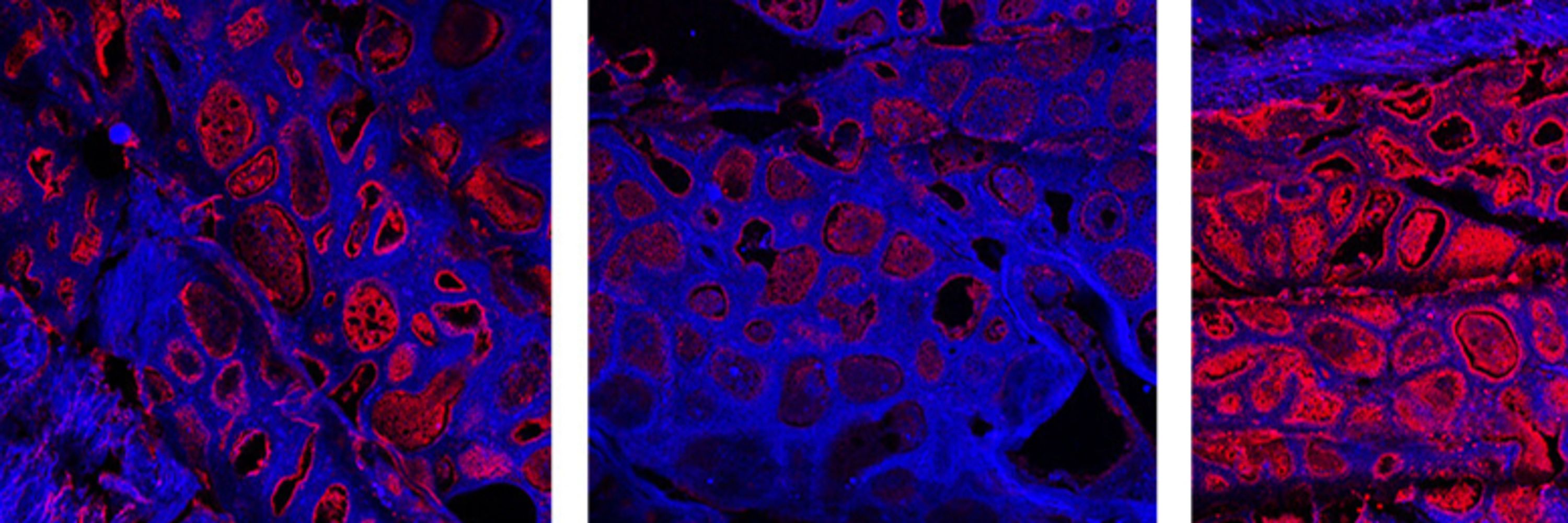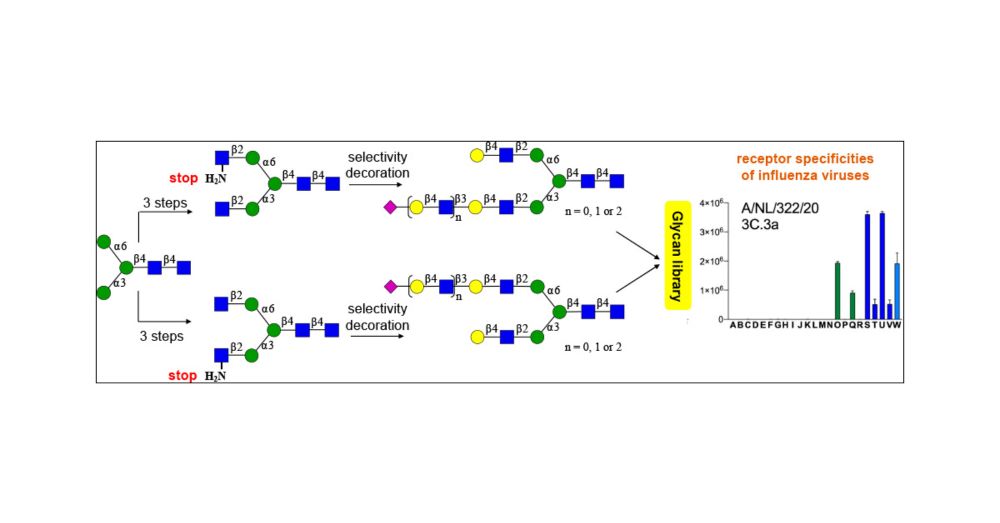
Robert de Vries
@rpdevrieslab.bsky.social
Virologist turned glycoscientist... Associate Prof @ Utrecht University Chemical Biology & Drug Discovery
Big shout out to @LiangRuonan and many thanks to @TheBoonsGroup , @UnioneLuca @UU_Glycoscience @uuuips.bsky.social
July 18, 2025 at 8:04 AM
Big shout out to @LiangRuonan and many thanks to @TheBoonsGroup , @UnioneLuca @UU_Glycoscience @uuuips.bsky.social
The latter is vital, as many H3N2 viruses bind solely to these complex structures, and many zoonotic avian HAs, engineered to bind human-type receptors, do so as well.
July 18, 2025 at 8:04 AM
The latter is vital, as many H3N2 viruses bind solely to these complex structures, and many zoonotic avian HAs, engineered to bind human-type receptors, do so as well.
Significant observations indicate that the conserved 195Y, which changes to F, rescues binding properties in specific backgrounds. And symmetric N-glycans with tri-LacNAc arms are not displayed on human tracheal epithelial cells.
July 18, 2025 at 8:04 AM
Significant observations indicate that the conserved 195Y, which changes to F, rescues binding properties in specific backgrounds. And symmetric N-glycans with tri-LacNAc arms are not displayed on human tracheal epithelial cells.
She followed those results up with, amongst others, a tissue binding experiment on human tracheal tissues. As glycan binding is one thing, but binding tissues is another.
July 18, 2025 at 8:04 AM
She followed those results up with, amongst others, a tissue binding experiment on human tracheal tissues. As glycan binding is one thing, but binding tissues is another.
Here, we aimed to identify the molecular determinant of tri- vs. di-LacNAc binding in strains that have circulated over the last 10 years. Ruonan created a mutant library and utilized complex N-glycans in an ELISA assay to assess specificity and avidity.
July 18, 2025 at 8:04 AM
Here, we aimed to identify the molecular determinant of tri- vs. di-LacNAc binding in strains that have circulated over the last 10 years. Ruonan created a mutant library and utilized complex N-glycans in an ELISA assay to assess specificity and avidity.
We previously demonstrated that human H3N2 viruses can have very strict specificities to complex N-glycans and that this can very depending on antigenic pressure pubs.acs.org/doi/full/10.... www.nature.com/articles/s41...

Asymmetrical Biantennary Glycans Prepared by a Stop-and-Go Strategy Reveal Receptor Binding Evolution of Human Influenza A Viruses
Glycan binding properties of respiratory viruses have been difficult to probe due to a lack of biologically relevant glycans for binding studies. Here, a stop-and-go chemoenzymatic methodology is pres...
pubs.acs.org
July 18, 2025 at 8:04 AM
We previously demonstrated that human H3N2 viruses can have very strict specificities to complex N-glycans and that this can very depending on antigenic pressure pubs.acs.org/doi/full/10.... www.nature.com/articles/s41...
Many thanks to @uu-cbdd.bsky.social @uuuips.bsky.social
April 25, 2025 at 6:37 AM
Many thanks to @uu-cbdd.bsky.social @uuuips.bsky.social
Of course, we don't know if precisely these O-glycans enable these viruses' unique zoonotic capabilities, as many other virological and ecological factors are likely involved. However, we do like to hypothesize that these binding properties contribute to these capabilities.
April 25, 2025 at 6:37 AM
Of course, we don't know if precisely these O-glycans enable these viruses' unique zoonotic capabilities, as many other virological and ecological factors are likely involved. However, we do like to hypothesize that these binding properties contribute to these capabilities.
Another observation we made is that the cattle-derived recombinant virus had nearly identical receptor binding properties compared to one of the first 2.3.4.4 viruses isolated over 10 years ago. Receptor specificity is relatively conserved for 2.3.4.4 viruses.
April 25, 2025 at 6:37 AM
Another observation we made is that the cattle-derived recombinant virus had nearly identical receptor binding properties compared to one of the first 2.3.4.4 viruses isolated over 10 years ago. Receptor specificity is relatively conserved for 2.3.4.4 viruses.
Our colleagues at @scripps.edu determined the structural features of these specificities. And i hope you can appreciate how the fucose lies in the receptor binding site. Fun observation is that we saw the peptide interacting with a very well-known epitope in the HA stalk
April 25, 2025 at 6:37 AM
Our colleagues at @scripps.edu determined the structural features of these specificities. And i hope you can appreciate how the fucose lies in the receptor binding site. Fun observation is that we saw the peptide interacting with a very well-known epitope in the HA stalk
Using these mucin-like O-glycans as a glycan array screen, we observed that these 2.3.4.4b were unique in their promiscuous receptor binding properties. These properties resulted in binding to human respiratory tract tissue while not binding human-type receptors.
April 25, 2025 at 6:37 AM
Using these mucin-like O-glycans as a glycan array screen, we observed that these 2.3.4.4b were unique in their promiscuous receptor binding properties. These properties resulted in binding to human respiratory tract tissue while not binding human-type receptors.
Many years ago, a carbohydrate chemist, Julia, started to synthesize mucin-like O-glycans, as they were greatly understudied. This was also when 2.3.4.4b H5Nx viruses were taking the stage.
April 25, 2025 at 6:37 AM
Many years ago, a carbohydrate chemist, Julia, started to synthesize mucin-like O-glycans, as they were greatly understudied. This was also when 2.3.4.4b H5Nx viruses were taking the stage.

